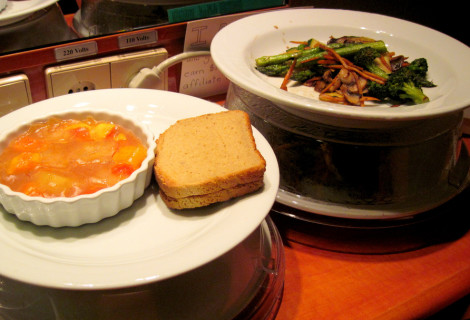Fat-Controlled Diet
Keeping you healthy is our main aim here at The GI Center. As your physicians, it is our aim to provide the best guidance of diet as well as medicine. In doing so, also please remember that it is not possible to mention each and every food component that is available in this world. Our instructions are designed to serve as guidance only. If you have any specific question regarding anything not fully addressed here, please call your physician.
Purpose: A low fat diet is healthy and beneficial for cardiac patients and certain gastrointestinal disorders. Patients with gallbladder disease, fatty liver, gastroparesis (slow gastric motility), pancreatitis, diarrhea or malabsorption problems all benefit from a low fat diet. Fat stimulates the gallbladder to contract which can aggravate gallstones or gallbladder disease. Fat slows down empyting of the stomach which can cause nausea and vomiting. A diet high in fat can worsen pancreatitis and cause fatty liver to progress to cirrhosis.
| Food Group | Foods Allowed | Foods to Avoid |
| Meats & Meat Substitutes | Lean beef such as sirloin, round, chuck; veal | Canned fish packed in oil |
| Lean pork such as tenderloin, chops, and fresh, canned, or cured boiled ham, Canadian bacon | All fried, fatty, or heavily marbled meat, poultry, or fish such as: ground beef, pork, or lamb; ribs; corned beef; sausage | |
| Lean lamb such as chops or leg | Most luncheon meats including bologna, salami and pimento loaf, frankfurters | |
| Poultry without the skin | Dry peas and beans prepared with fat or high-fat meat | |
| All fresh, frozen, or canned fish packed in water | Nuts and peanut butter | |
| Eggs (limit to 3-4 yolks weekly) | ||
| Broil, roast, grill, or boil meats, poultry, and fish instead of frying. Trim all visible fat before cooking. | ||
| Select or prepare meats in their natural juice instead of with sauces and gravies. | ||
| Vegetables | Fresh, frozen, or canned vegetables | Vegetables prepared with added fat, cream sauces, or cheese sauces |
| Cook vegetables in broth or sprinkle with herbs and spices to add flavor. | ||
| Fruits & Fruit Juices | All fresh, frozen, canned, or dried fruit | Avocado |
| Fruit juices | ||
| Snack on fresh or dried fruits instead of chips or cookies. | ||
| Grains & Starches | Whole-grain or enriched breads, cereals, rice, barley, and pastas | Breads prepared with eggs or cheese |
| Fat-free crackers | Granola-type cereals | |
| Choose a tomato-based sauce instead of cream sauce for pastas. | Biscuits, pancakes, croissants, muffins, or doughnuts | |
| Use fruit spreads on breads in place of butter or margarine. | High-fat snack crackers | |
| Milk, Yogurt, and Cheese | Skim milk; skim milk cheeses with less than 5 grams of fat per ounce | 1%, 2% and whole milk, buttermilk, chocolate milk, and cream |
| Low-fat or nonfat yogurt and cottage cheese | Regular, hard, and processed cheeses | |
| In recipes, substitute skim or evaporated skim milk, or low-fat yogurt for whole milk and cream. | ||
| Fats | Limit fat choices to 3-5 servings each day. One serving equals: | |
| 1 teaspoon of margarine, butter, regular mayonnaise, oil, shortening, and bacon fat | ||
| 1 teaspoon of diet margarine, reduced-calorie mayonnaise, reduced-calorie creamy salad dressing, regular oil-based salad dressing, cream cheese, and whipping cream | ||
| 2 tablespoons of reduced-calorie salad dressing (oil-based), shredded coconut, liquid coffee whitener and sour cream | ||
| Snacks, Sweets, Condiments, and Beverages | Fat-free broth or soups | Cream or cheese sauces, soups and gravies |
| Fruit ice, gelatin, angel food cake, graham crackers, and nonfat desserts | Cakes, cookies, pies and ice cream | |
| Honey, jams, jellies, syrups, and hard candy | Coconut, chocolate, and creamed candy | |
| Coffee, tea, soda, and other nondairy drinks | High-fat snacks such as chips and buttered popcorn | |
| Try lemon juice, vinegar, or garlic or onion powder on cooked foods in place of butter or margarine | ||



